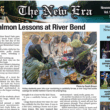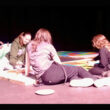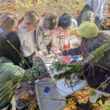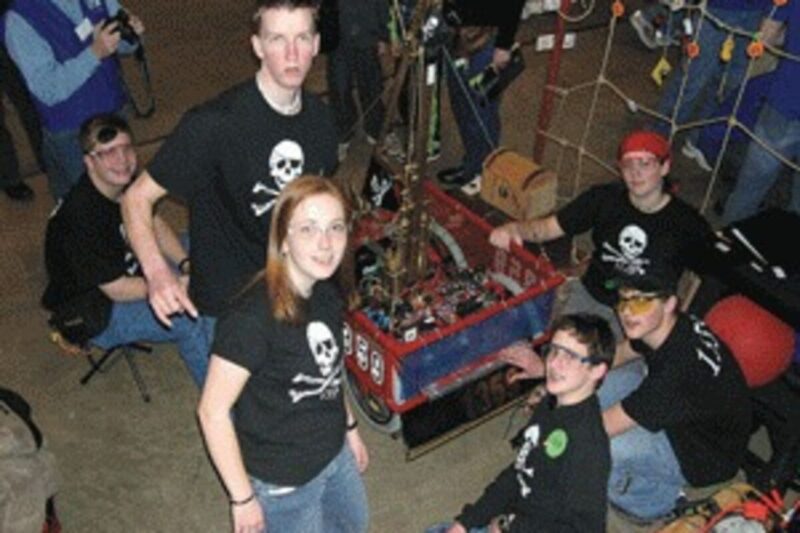Jeff Rice
For The New Era
The “Scalawags” Robotic Team #1359 is comprised of 14 members of Linn County Venture Scouting Crew #308 and is sponsored by Linn County Area Schools. Team members include high school students from South Albany, West Albany, East Linn Christian Academy, and Sweet Home.
Each student brings diverse talents and skills that help the team function more smoothly as a whole. The following is an account of my experience at the Pacific Northwest FIRST Regional Robotics Competition as a member of the Scalawags. I will attempt to share the excitement of the event with each of you through this narrative story.
The alarm clock rudely screamed for my attention at 3:30 a.m. and I vaulted (as much as one can vault at 3:30 in the morning) out of my warm bed and into the shower. This was the day that my Robotics Team had been eagerly awaiting for months! Opening day of the FIRST Robotics Competition had Finally arrived!
37 robots, representing around 1,000 high school students, from Hawaii to Alaska and all points in between would soon be converging on the Portland Rose Quarter Coliseum for the Pacific Northwest Regional. We arrived about an hour before we could send our three uncrating representatives into the pit area. The pit area is where teams are allocated a space to work. The time was spent playing hackey-sack and talking.
After waiting yet again for more than an hour, the doors were opened and waves of people crowded inside. And there we waited for another half an hour until the arena staff opened the doors to the teams. Once inside, the team met at the pit, which had been assembled by our three representatives. Our pit design centered upon a pirate theme, and our 20 x 20 foot area was soon transformed into a PVC pipe pirate ship, complete with mast, rigging, sails, and a crow’s nest. Team members sported the Jolly Roger emblem boldly on matching black shirts and the occasional eye patch.
After giving the robots a final check, the robotic teams were then allowed to participate in several practice rounds. Once the practice runs were completed, our team headed to the hotel for some much needed rest.
The next day I got up at 6 a.m. sharp. I was grateful to discover that not many people were showering at the same moment, as evidenced by the hot water. After a team breakfast we walked back to the Rose Quarter, knowing that how well we did that day would determine whether we were a finalist or not. There was not much time to stress over this; we were in the fifth match. At the beginning, in the 15 second autonomous period, our robot valiantly followed a line and triggered a ball release, showering the field with purple five point playground balls. As the drivers took control for the remaining 1 minute and 45 seconds, the robot and our alliance herded balls to our human players, who successfully made shot after shot into the goal. With a minute remaining, the robot maneuvered up the two platforms, triggered the pneumatic arm and latched onto the 10 foot bar, staying there until the match was over. The points were added up, and we had won!
That day, the robot worked perfectly, except for one match in which it ended up getting capsized. As icing to the cake, our team received the Imagery Award, bestowed for the overall impression and aesthetics, from machine to team appearance. Seemingly small details helped integrate our completed presentation, such as our pirate themed pit area, gold doubloons (chocolate coins), eye patches and the jaunty parrot hat sported by our switch operator.
On Saturday I again woke at 6 a.m., although somewhat dragging my feet. At 8 a.m., the crew walked over to the Rose Quarter and we completed our final two qualification matches, winning both. Our team was seeded second out of 37 teams! We chose our alliances for the finals carefully, because the final rounds are in an elimination tournament style. The first round chalked up a Team Scalawag victory, but our hopes were dashed in the next round.
Our high spirits were momentarily deflated, only to rise far beyond our expectations during the afternoon award ceremony. Team Scalawag received both the 2004 Rookie All Star Team, and Rookie Top Seed, which meant the team qualified for the Championships in Atlanta, Georgia.
For me, participating in this event proved to be an exciting and unforgettable three days of non-stop learning. If one is given the right tools, guidance, and ambition, our influence can help change the world for the good of all. I am looking forward with great anticipation towards the next challenge at the Championships.
Currently we are in fund-raising mode to attend the Championships held April 15-18, 2004 in Atlanta, Georgia. If you would like more information about FIRST robotics, or would like to help sponsor our robotics team, please contact our team advisor, Mr. Bill Buskirk, at [email protected]
What is FIRST?
FIRST is an acronym for “For Inspiration and Recognition in Science and Technology”. The basic premise behind FIRST is to give teenagers a six week period in which to build a robot to compete in a game where the rules change every year.
Each year, teams from all over the world receive an identical kit of parts. Upon delivery of the kit, the teams spend an intense six weeks brainstorming, designing, building, and testing their robot. These teams are composed of high school students who are partnered with teachers, professional engineers, computer professionals, mathematicians and scientists. The partnership works together to construct a robot for the competition.
There is more than just building a robot in FIRST; there are also many sub-competitions, such as chairman’s award (best overall team), animation, and a CAD (computer aided design) competition.
FIRST is designed to encourage young teens to think about and explore areas of science and technology. The end result of the whole process is the discovery of connections between classroom lessons and real-life applications. Some of the skills and lessons learned by FIRST team members include, but are not limited to:
Computer science
Welding and machining
Electrical wiring and design
Public and community relations
Aesthetic design
Budgeting (money, time, etc.)
Leadership and organization
The FIRST Program is driven by strong community, educational, and professional partnerships that share a multitude of talents with the young minds they mentor. FIRST is trying to convey the message through activities like the robotics teams that our world can and will be drastically influenced by the advance of technology. FIRST encourages young minds to think in different ways to solve a problem, and to seek opportunities to gain knowledge so it can be used to make the world a better place.
You can visit “http://www.usfirst.org/” for more information.





